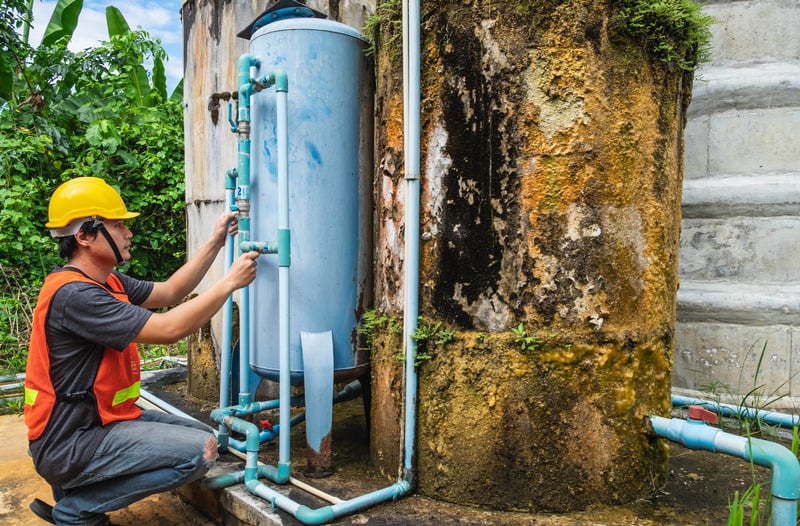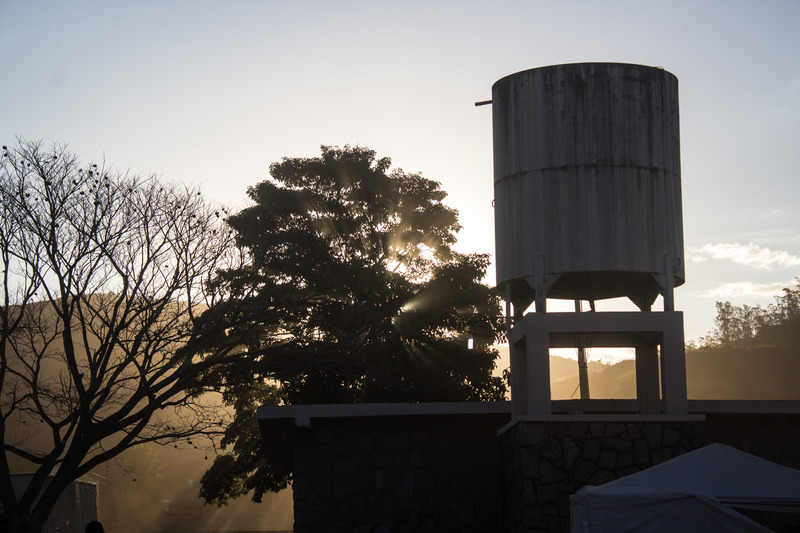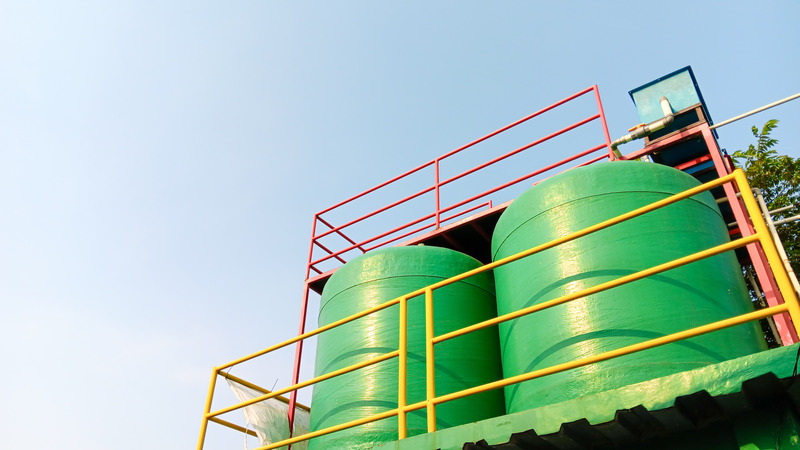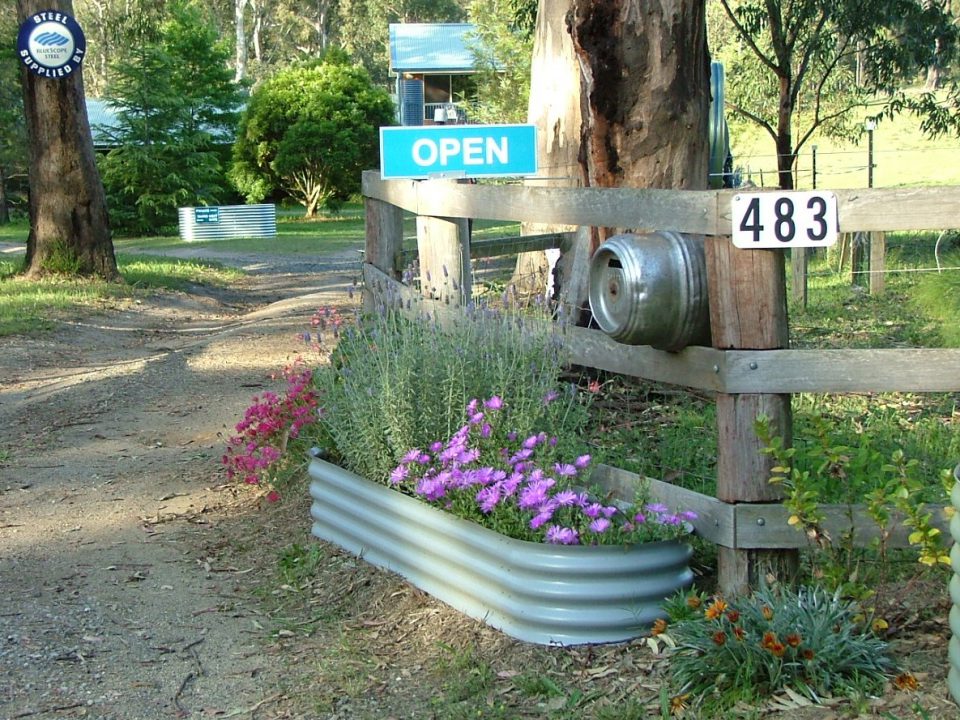
Raised Garden Beds: What You Need to Know
January 25, 2023Top 7 Factors to Consider When Choosing a Highline Water Tank
March 4, 2024
Adding a Water Tank for Your Garden? Learn the Pros and Cons First
So, you’re thinking about the idea of getting a water tank for your garden? It’s a pretty solid move for any gardening enthusiast looking to give their green space a bit of a boost. But, just like bringing home a new plant, there’s a bit to consider before you dive in.
There’s plenty to think about and plan before doing anything. There’s also a difference between adding a tank for water consumption and using the water tanks as raised garden beds. But don’t worry, that’s what we’re here to figure out. Let’s take a closer look at what a garden water tank can do for you and whether it’s worth the leap.
There’s plenty to think about, but don’t sweat it—we’ve got you covered and we’ll talk about important factors to help you make your final pick.
Water Tank Size and Garden Needs: What water tank size do I need for my garden?
Choosing the right size for your garden water tank is a bit like tailoring a suit – it needs to fit just right. You don’t want to end up with too little water during a dry spell, but you also don’t want a giant tank taking up more space than necessary.
So, where do you start? First, take a good look at your garden. Are you running a mini farm with rows of veggies, or is it more about a few flower beds and a lawn? The size and type of your green space are your first clues. A cosy herb garden might be happy with a 1000-litre tank, but if you’re aiming to keep a larger area green, you might need to think bigger and slimmer at the same time link slimline water tanks.
Then, there’s your garden’s appetite for water. Some plants are like camels, hardly needing a sip, while others are always thirsty. And if you’re in a spot where the sun beats down relentlessly, your garden will drink up water faster than you can say “evaporation.”
Next, let’s talk numbers. Thinking about a 5000-litre tank? It sounds like a lot, but how long it lasts depends on your daily water use. If your garden sips water modestly and you’re using efficient watering methods like drip irrigation, that 5000 litres could go a long way. But if your garden’s guzzling water and the rain’s playing hard to get, you might find yourself running low sooner than you’d like.
Types of Water Tanks for Gardens: Which type of water tank is best?
You always have options, each with its own set of perks and quirks like these examples:
Above-Ground Tanks
These are the popular kids on the block. Easy to install and often more budget-friendly, they sit proudly in your garden. They’re like that practical piece of furniture that doesn’t quite blend in but does the job well.
The catch? They don’t exactly blend well with everything unless you get creative with landscaping or choose a design that complements your garden.
Below-Ground Tanks
The secret agents of water tanks. They’re out of sight, doing their job without taking up precious space or interfering with your garden’s aesthetics. Perfect for smaller gardens or if you’re not keen on your tank photobombing every garden view.
The trade-off? They’re usually pricier and require a more complex installation process. They’re like the high-end, built-in appliances of the water tank world.
Collapsible Tanks
The nomads of water storage, these tanks are all about flexibility. They’re there when you need them and out of the way when you don’t. Ideal for gardens that change with the seasons or for gardeners who like to mix things up. They’re also great for getting water storage into hard-to-reach spots.
Just keep in mind they might not have the longevity or resilience of their more permanent counterparts.
Cost-Effectiveness and Initial Investment: What’s the cheapest method of storing water?
Think of your garden water tank as not just a product but as an investment in your green sanctuary. Sure, the sticker price is important, but it’s the long term that really counts.
If you’re looking for the most wallet-friendly option right off the bat, above-ground plastic tanks are your go-to. They’re like the economy cars of the water tank world – affordable, functional, and they get the job done without too much fuss. Perfect for gardeners who want to dip their toes into rainwater harvesting without a hefty initial investment.
Now, it’s in the savings where things get interesting. Using a tank to catch and store rainwater is like having a little gold mine in your backyard. Every drop you collect is a drop you don’t have to pay for. Over months and years, especially in regions with high water tariffs or frequent droughts, this can add up to significant savings. Your tank could end up paying for itself and then some.
And while snagging a bargain is great, sometimes spending a bit more upfront can give you better bang for your buck in the long run. A tank that’s a bit pricier but boasts superior durability, efficiency, or features (like better UV protection, a more robust design, or a longer warranty) might be the smarter choice. It’s like choosing a slightly more expensive appliance that uses less electricity – it saves you money down the line.

Water Quality and Plant Health: What is the healthiest way to store water?
Water quality isn’t just a detail when it comes to gardening; it’s a cornerstone of plant health. You want your garden to flourish, not just limp along, and the water you use plays a huge role in this.
Think of your water tank like the kitchenware you use. Just as you’d opt for food-grade materials for storage containers, your garden water tank should be made of something that won’t leach nasties into the water.
Food-grade polyethylene tanks are the go-to for many gardeners. They’re like the stainless steel of the water tanks – safe, reliable, and clean. This material ensures that the water remains pure from the tank to your tulips, tomatoes, or whatever treasures you’re growing.
Your water tank also needs regular care to stay healthy. Neglect it, and you might end up with algae, sediment, or other unwelcome guests that could harm your plants. So regular maintenance, such as cleaning out the tank and checking for debris or contamination, is key.
In the end, it’s all about creating a nurturing environment for your garden. High-quality, clean water can boost plant growth, enhance resilience to pests and diseases, and even improve the taste of your homegrown veggies.
Space Considerations and Tank Placement: Where is the best place to put a water tank?
The placement needs to be practical, but you also don’t want it sticking out like a sore thumb.
The ideal spot for your tank is where it serves its purpose without compromising the look and feel of your garden. It’s like finding the perfect spot for a bird bath – somewhere it can be appreciated and used to its full potential.
If your tank is too far from your garden, you’ll be hauling water across your yard, which isn’t anyone’s idea of a good time. Yet, if it’s too prominent, your garden might start to feel more like an industrial zone.
Just like you wouldn’t place a heavy planter on a shaky table, your water tank needs a solid foundation. This is especially true for larger tanks, which can be quite heavy when full.
Consider the ground where you plan to place the tank – it should be level and stable. Think about how you might prepare a spot for a new patio or deck as your tank deserves a similar level of consideration.
If you’re planning to catch rainwater, the tank’s placement becomes even more strategic. It should be near downspouts or runoff areas, making the most of natural water flow.
And then there’s blending in. There are creative ways to make your tank blend with your garden’s aesthetic. Whether it’s painting it to match your garden’s theme, using trellises with climbing plants to camouflage it, or even incorporating it into a garden feature, there are plenty of ways to make your tank look at home in your garden.

Self-Watering Systems Integration: What is the best way to self water a garden?
Integrating a water tank with a self-watering system can revolutionize your gardening routine. The question then becomes, “How do you use a garden water tank effectively?”
Start by connecting your tank to a drip irrigation or soaker hose system where you can automate watering, ensuring your plants receive a steady, measured supply of water.
The best part is the peace of mind it brings. Even when life gets busy or you’re away, you’ll know your garden is getting exactly what it needs.
Rainwater Harvesting and Environmental Impact: What is the best water storage method?
Lastly, here’s where harvesting rainwater and its impact on Mother Nature makes an entrance. There’s no doubt harvesting rainwater is an environmentally friendly practice with plenty of boon for your garden and the broader ecosystem. But how do you do it?
Use your garden water tank to capture rainwater from rooftops or other catchment areas. This reduces reliance on municipal water and provides a soft, chemical-free water source for your plants.
Ensure your tank is also appropriately sized for your catchment potential and garden needs, balancing between too little storage (missing out on valuable rainwater) and too much (where the tank remains mostly empty).
In times when the tank gets full, install an overflow mechanism in your tank to handle excess water during heavy rainfall. This can prevent flooding and structural damage to the tank and surrounding area.
The bigger picture here is that by capturing rainwater, you’re reducing the volume of runoff that can erode soil and carry pollutants into streams, rivers, and lakes, helping to protect aquatic ecosystems. Using harvested rainwater in your garden conserves potable water and reduces the energy and overall water needs of your area.
Conclusion
Choosing to install a water tank in your garden is a significant decision that comes with many considerations. It’s not a walk in the park all the time but with the pros and cons we provided, you’re set to do things right even on the first try. Remember, a water tank can be more than just a practical addition; it can be the missing link your garden needs all this time.

